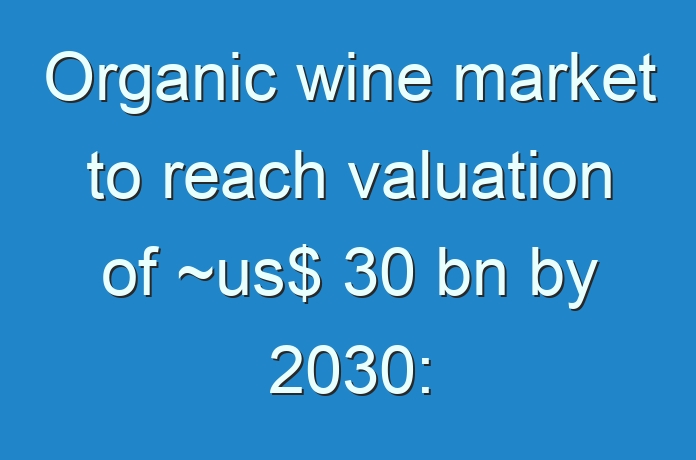
Organic Wine Market: Introduction
A recent study published by Transparency Market Research on the organic wine market comprises global industry analysis and opportunity assessment for 2020-2030. Revenue generated from the global organic wine market was valued at ~US$ 11 Bn in 2020, which is expected to expand at a CAGR of ~10.8%, to reach ~US$ 30 Bn by 2030.
Increasing Preference for Vegan Beverages among People to Augment Market Growth
The vegan trend is moving in new directions; millennials are becoming increasingly health-conscious and environment sensitive. Vegan is a group of population choosing a plant-based diet and beverage products to protect the environment and take better care of their health. Vegan wines are also gaining popularity among consumers. Vegan wines are made without using any animal products or byproducts in any step of farming or vinification processes. Traditionally, casein or a protein found in milk-egg white was used to remove any micro or tiny particles from wine that cannot be removed using the filtration method. At present, winemakers either use bentonite, a form of pea protein or clay to remove particles with the use of non-animal fining products or leave the particle to sink naturally to the bottom of the wine. This is providing new market prospects for vegan organic wine.
Request a Sample –
https://www.transparencymarketresearch.com/sample/sample.php?flag=S&rep_id=34391
Biodynamic and Other Environmental Factors Influencing Organic Viticulture and Winemaking
Consumers are increasingly interested in and concerned about the products they buy, as well as how and where they are produced. The wine community is finding bold, creative, and innovative ways of satisfying consumer interests, ensuring the long-term viability and leaving a lighter footprint on our planet. Wine producers are inclining toward biodynamic wine harvesting and culture. Biodynamic and other environment-friendly practices do not impact the flavor or taste of wines. These movements were born largely out of a desire to encourage environmental and social change. Hence, this factor fuels the demand for organic wine from consumers that are more concerned about environmental health and from consumers who believe that biodynamic wines are better and cause less-intense hangovers.
Request for covid19 impact analysis –
https://www.transparencymarketresearch.com/sample/sample.php?flag=covid19&rep_id=34391
Increasing Preference for Organic Wines to Boost Sales
Health benefits associated with wine have been in common knowledge for years, and organic wine is the healthiest of them all. Organic wine has lots of antioxidants, vitamins, and minerals, which are essential for good human health. Organic wines are also associated with different features, which make it more preferable over conventional wines, such as non-GMOs, no synthetic additives, no added sulfites, less sugar, lower alcohol content, and also supports sustainable organic farming and production methods. Hence, all these factors make consumers opt for organic wines. The number of lifestyle diseases is increasing around the world; people are becoming more concerned about their health and diets, and prefer food and drinks that are healthy without any chemical additives.
Buy now-
https://www.transparencymarketresearch.com/checkout.php?rep_id=34391<ype=S
Impact of COVID-19: Organic Wine Market
The Covid-19 pandemic has deeply impacted the drinks industry global sales to slump, as the coronavirus crisis has shut down bars and restaurants worldwide. The wine market is less volatile and gives wine investors the convenience of owning a non-correlated investment in this period of market stress. Given the situation, the hospitality industry is among the hardest hit, as companies and communities have been affected due to rising number of corona patients and further extension of lockdown.
The food and beverages sector has cemented its place among the global populace firmly over the years. This sector attracts considerable investments and subsidies from numerous government and non-government organizations. The trends and popularity regarding specific sub-categories are dynamic and help in structuring the overall growth. The trends are a way of answering the needs of the consumer. The players in the food and beverages sector have to adapt to the changing trends, which helps increase revenue-generation opportunities.
More Trending Report-





